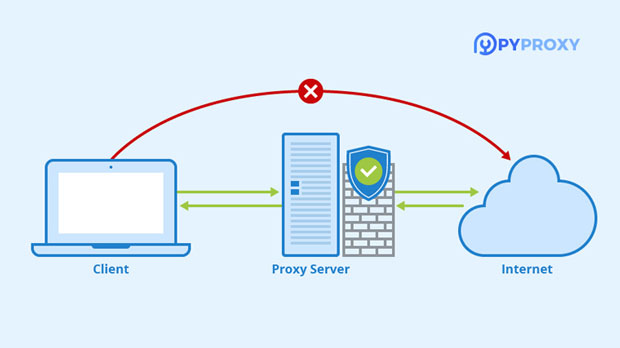Managing social media accounts, whether for a business or an individual, requires handling multiple platforms, engaging with diverse audiences, and ensuring consistent activity. As social media platforms often impose restrictions on the number of actions a single IP address can perform, this can lead to account suspensions or bans, limiting the effectiveness of marketing strategies. One solution to this issue is purchasing multiple proxy ips. By utilizing multiple proxies, social media managers can distribute their actions across various IP addresses, reducing the risk of encountering restrictions and improving the overall efficiency of their social media management. In this article, we will explore how using multiple proxy ips can enhance social media management, focusing on its benefits, practical applications, and how it contributes to seamless operations. The Role of Proxy IPs in Social Media ManagementProxy IPs play a crucial role in social media management by masking a user's real IP address and replacing it with an intermediary IP address. This process allows for anonymous activity on social media platforms, thus preventing account suspension or limitation due to the overuse of a single IP. By leveraging proxy servers, businesses and individuals can overcome geo-restrictions, access region-specific content, and automate tasks without being detected by the platform's security measures. When used correctly, proxies enable users to manage several accounts simultaneously without triggering alerts that might result in account bans.How Multiple Proxy IPs Improve Social Media Efficiency1. Avoiding Rate Limits and SuspensionsSocial media platforms often implement rate limits to prevent spammy or robotic behavior. These limits restrict the number of actions, such as likes, comments, or follows, that can be performed by a single IP address in a set period. If a user exceeds these limits, the account may be flagged, restricted, or even suspended. By purchasing multiple proxy IPs, social media managers can spread out their actions across various IPs, effectively bypassing these restrictions and maintaining a natural, consistent flow of engagement.2. Enhanced Automation and SchedulingManaging multiple social media accounts often requires the automation of tasks, such as posting updates, following users, and liking or commenting on content. Automation tools can help schedule and perform these tasks, but without proxies, using such tools on a large scale can quickly result in IP address blocks. Multiple proxy IPs allow social media managers to run these automated tools without worrying about hitting rate limits. This capability enhances productivity, enabling managers to schedule posts and interact with followers across different accounts simultaneously, without interruptions.3. Protection from IP Bans and BlacklistingIn cases where a social media platform identifies suspicious behavior from a single IP address, it may blacklist that IP, causing issues for all accounts tied to that address. With multiple proxy IPs, users can distribute their activities among various addresses, reducing the likelihood of one being flagged or banned. If one proxy is blocked, the manager can simply switch to another one without losing access to the platform. This ensures business continuity and maintains smooth management operations.Practical Applications of Multiple Proxy IPs in Social Media Management1. Managing Multiple Accounts SimultaneouslyFor businesses or individuals managing multiple social media profiles, purchasing multiple proxy IPs is a game-changer. Instead of using a single IP to access and update all accounts, which can trigger platform restrictions, proxies allow users to spread their activity across different IPs. This is particularly useful when managing a large number of accounts for different clients or brands, as each account can be associated with a unique IP address, ensuring that they are treated as separate entities by the platform.2. Bypassing Geo-RestrictionsDifferent social media platforms impose region-based restrictions or content availability. For example, certain content may only be accessible to users in specific countries or regions. Using proxy IPs located in various parts of the world, social media managers can access content that would otherwise be unavailable in their region. This is especially important for businesses with a global presence or marketers targeting specific geographical locations.3. Enhanced Privacy and SecuritySecurity is a top priority for any social media manager. By routing traffic through multiple proxies, social media accounts are less likely to be compromised or targeted by hackers. Proxies provide an extra layer of anonymity, ensuring that sensitive account information remains secure. Additionally, using proxy IPs minimizes the risk of social engineering attacks that may arise from tracking the real IP address of a manager.How to Choose the Right Proxy Service for Social Media ManagementWhen purchasing proxy IPs, it is important to choose a service that aligns with your specific needs. Here are a few factors to consider when selecting a proxy provider:1. Proxy Type There are various types of proxies, including residential proxies, data center proxies, and mobile proxies. Residential proxies are often more reliable for social media management because they appear as regular user traffic, reducing the risk of detection by social media platforms. Data center proxies, on the other hand, can be faster and more affordable but may be flagged by platforms if they are overused.2. IP Pool Size The larger the IP pool, the more diverse your proxy network will be. A large pool allows you to rotate between IP addresses more frequently, minimizing the risk of detection. Ensure that your proxy provider offers a wide range of IPs to choose from, allowing for greater flexibility and scalability in your social media management.3. Speed and Reliability In social media management, speed is crucial, especially when using automation tools. Slow or unreliable proxies can result in delays, missed posts, and reduced engagement. Choose a proxy service known for high-speed connections and reliable uptime to ensure that your social media management remains efficient.Purchasing multiple proxy IPs can significantly enhance the efficiency and effectiveness of social media management. By using proxies, social media managers can avoid rate limits, protect against IP bans, and access geo-restricted content, all while maintaining a high level of privacy and security. Multiple proxies also enable the management of multiple accounts seamlessly and facilitate automation without the risk of being detected by social media platforms. As businesses continue to expand their digital presence, the strategic use of proxy IPs will remain an essential tool for optimizing social media management and improving overall engagement.
Apr 10, 2025
![arrow]()




























































